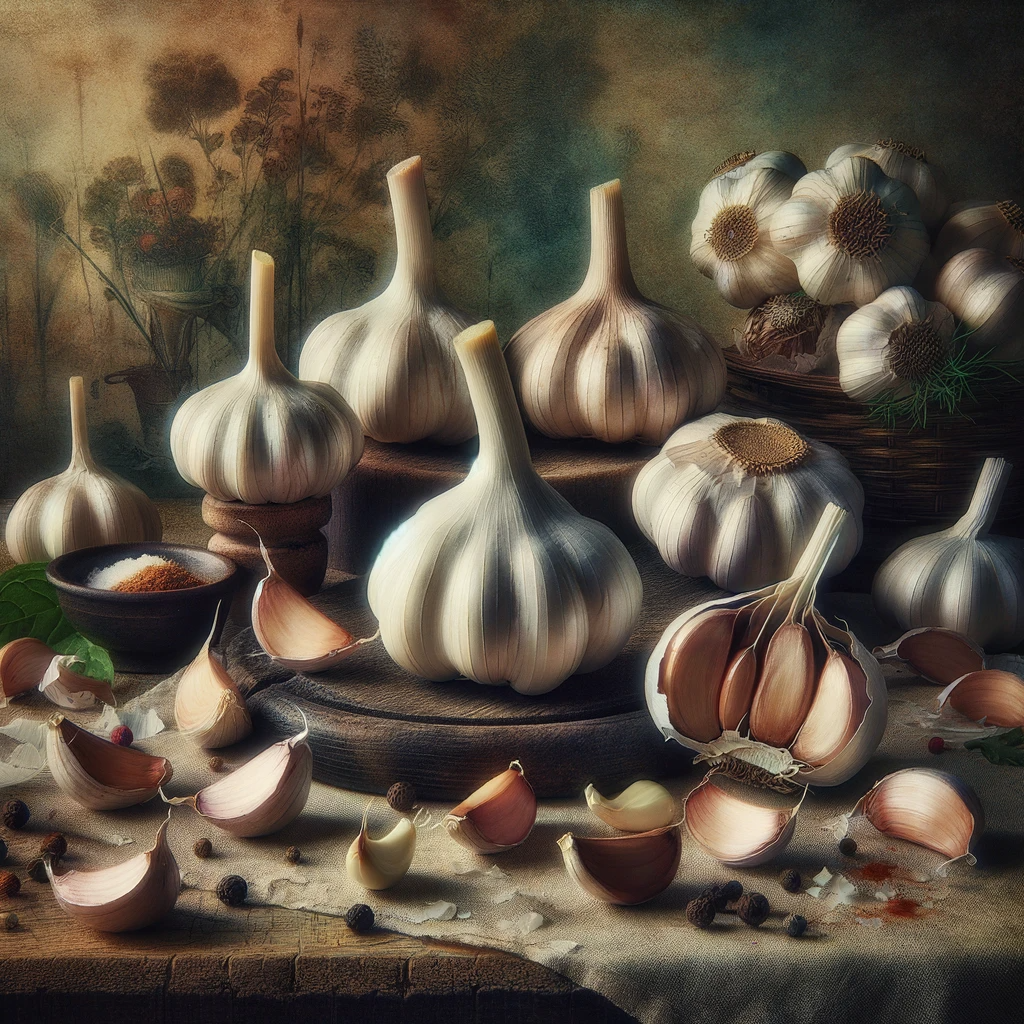Introduction
Garlic, a staple in kitchens worldwide, is more than just a flavorful addition to your favorite dishes. While it’s renowned for its unmistakable aroma and taste, garlic is also a powerful ingredient with a rich history of medicinal and culinary use. In this article, we delve into the fascinating science behind garlic and uncover its various properties that make it an essential ingredient in a wide range of cuisines.
- The Chemistry of Garlic: At the heart of garlic’s culinary and medicinal allure lies its complex chemistry. The primary bioactive compound in garlic is called allicin, which is responsible for both its distinctive smell and many of its health benefits. When garlic is crushed or chopped, an enzyme called alliinase is activated, converting the precursor compound alliin into allicin. This transformation is what gives garlic its pungent aroma and numerous therapeutic properties.
- Antioxidant Powerhouse: Garlic is packed with antioxidants, which help combat harmful free radicals in the body. These antioxidants include quercetin, sulfur compounds, and selenium, among others. Their presence makes garlic an excellent dietary addition for protecting cells from oxidative damage and reducing the risk of chronic diseases.
- Anti-Inflammatory Effects: Allicin and other sulfur compounds found in garlic exhibit anti-inflammatory properties. These compounds may help alleviate inflammatory conditions and contribute to overall health. Including garlic in your diet could potentially reduce the risk of chronic inflammatory diseases.
- Heart-Healthy Benefits: Numerous studies have shown that garlic can have a positive impact on heart health. It is believed to lower blood pressure, reduce cholesterol levels, and improve overall cardiovascular function. Regular consumption of garlic may contribute to a lower risk of heart disease.
- Immune System Support: Garlic has been used for centuries as a natural remedy to boost the immune system. Its antimicrobial and antibacterial properties can help the body fight off infections and illnesses. Consuming garlic during cold and flu season might help reduce the severity and duration of these common ailments.
- Culinary Versatility: Beyond its health benefits, garlic is a versatile ingredient that enhances the flavor of countless dishes. Whether it’s used in savory sauces, roasted with vegetables, or incorporated into marinades, garlic adds depth and complexity to meals, making it a kitchen essential for chefs and home cooks alike.
- Choosing and Storing Garlic: To get the most out of your garlic, opt for fresh bulbs with firm cloves. Store them in a cool, dry place, away from direct sunlight, to maintain their flavor and potency. When cooking, remember that the intensity of garlic flavor varies depending on how it’s prepared – minced garlic is more potent than sliced or crushed.
Conclusion
In conclusion, garlic is more than just a flavorful ingredient; it’s a powerhouse of health benefits backed by science. From its antioxidant properties to its ability to support heart health and boost the immune system, garlic has rightfully earned its place in kitchens worldwide. So, the next time you savor the aroma of garlic wafting from a sizzling pan, know that you’re not only enhancing the taste of your dish but also harnessing the science-backed benefits of this remarkable ingredient. Incorporate garlic into your culinary adventures and experience its magic for yourself
